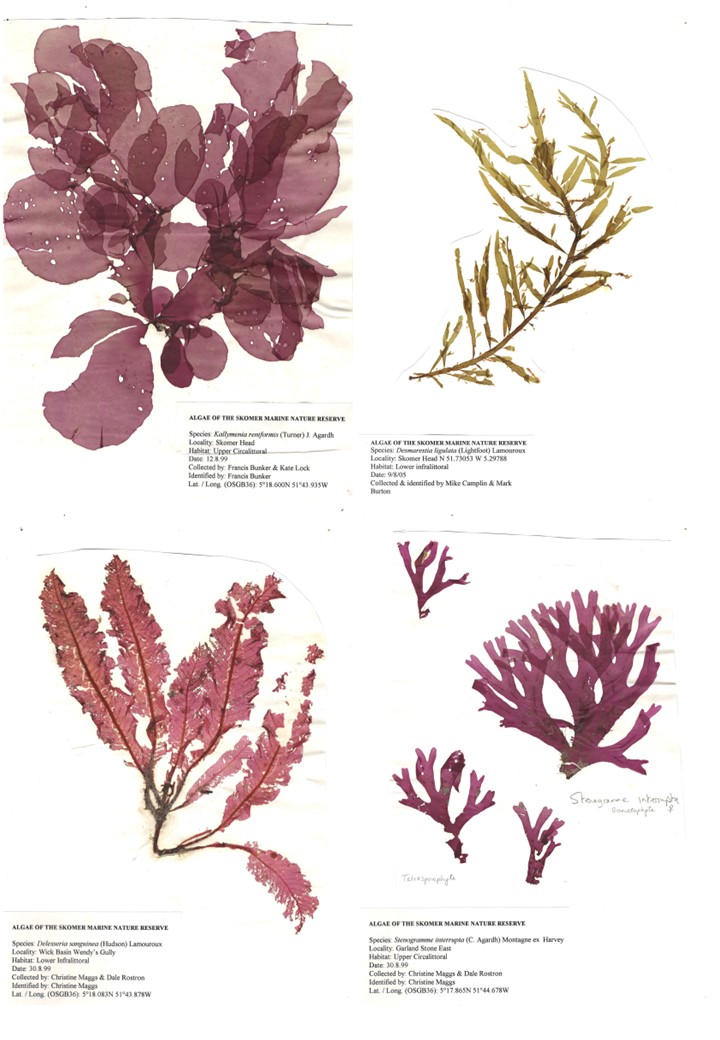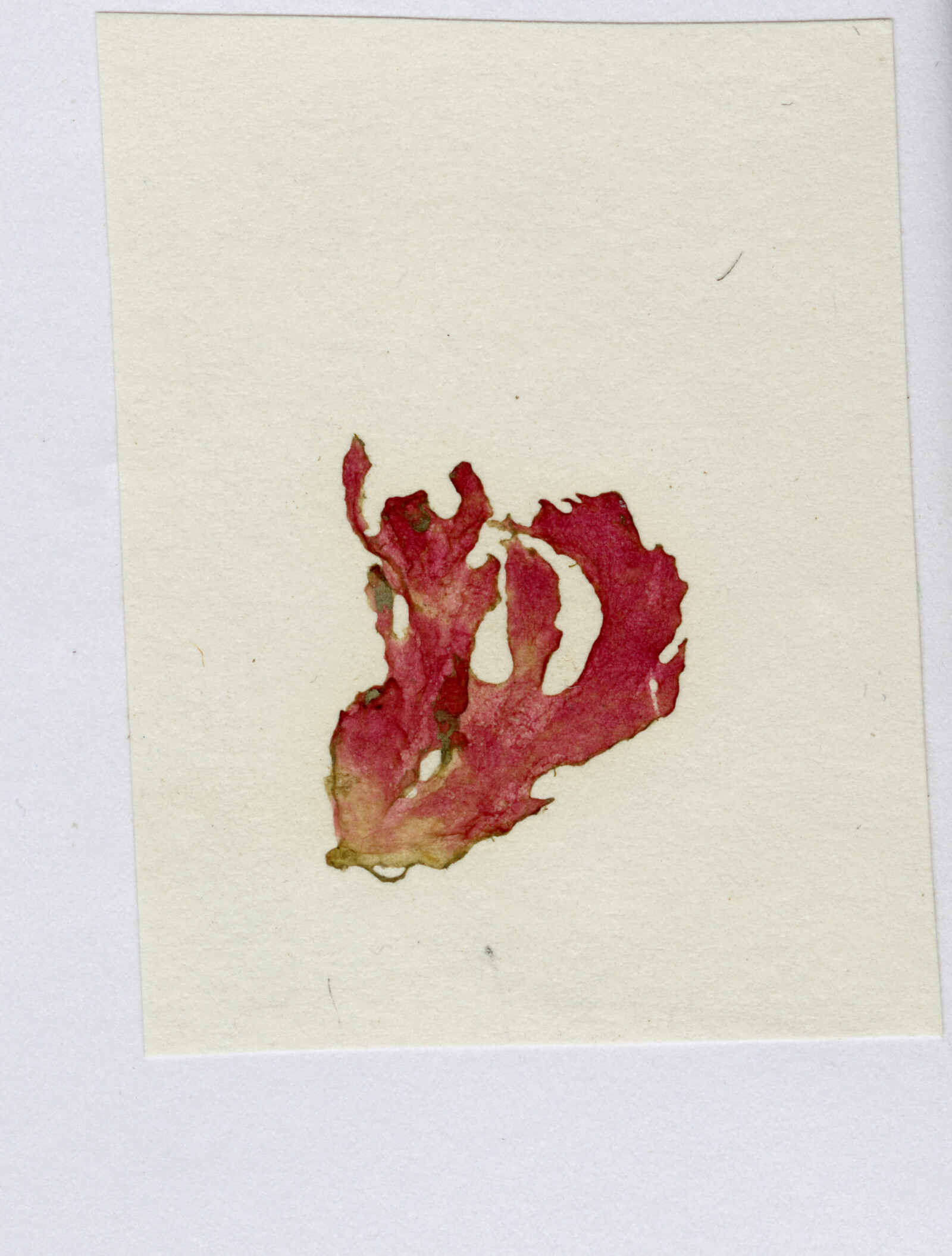A new home for some Skomer seaweeds
, 9 May 2023
Off the coast of Pembrokeshire in west Wales is Ynys Sgomer, Skomer Island, a very special place for wildlife. It is a National Nature Reserve, a Site of Special Scientific Interest and the surrounding waters were the first designated Marine Conservation Zone in Wales in 2014. This prestigious list gives a high level of conservation protection to the rich marine habitats and species found here.
A collection of over 100 pressed seaweeds from Skomer Marine Conservation Zone have been donated to the Museum by Kate Lock, Marine Conservation Officer at Natural Resources Wales. Scientists have studied the marine life of the island for many years, and these specimens were collected as part of surveys to record the life within this highly protected region covering 27 kilometers of mostly rocky shores including cliffs, rock pools, caves and tunnels.
The collection preserves evidence of over 70 different seaweed species collected from places with wonderfully descriptive names such as Garland Stone, Martin’s Haven, The Wick, Wendy’s Gully, North Wall and Mew Stone. Of the 119 specimens, 107 are red seaweeds, 12 are brown seaweeds, and 2 are green seaweeds. Almost all were collected from below the tidal zone.
A couple of non-native seaweeds make an appearance, Antithamnionella ternifolia, which was first recorded from Wales in 1956 north of Skokholm and south of Skomer. Also Siphoned Japan Weed (Dasysiphonia japonica) which is native to the Pacific Ocean and invasive in the UK. It was first recorded from Wales in 1999 at Milford Haven. Our specimen is from the Wick on Skomer Island and was collected in 2005. This same survey recorded the rare red seaweed, Crested Spermwell (Euthora cristata) which grows on Forest Kelp (Laminaria hyperborea) has a mainly northern distribution in the UK and most records are from Scotland, with a few in Pembrokeshire.
The exclusively subtidal rare red seaweed Lobed Jelly Weed (Schmitzia hiscockiana) was described as new to science in 1985 from Ynys Enlli in north Wales (Maggs & Guiry 1985). It is found on the western shores of Britain and Ireland and our specimen was collected in 1999 from Skomer.
Collections of plants and algae from highly protected areas like Skomer are rare and highly regulated. These collections were made during surveys conducted by the Countryside Council for Wales, which is now part of Natural Resources Wales, the organisation that manages the island for wildlife. The specimens provide invaluable evidence for the species found there and how they change over time and cannot be duplicated. They will now join the other 8000 algae specimens in the herbarium at Amgueddfa Cymru. They have improved the Museum’s coverage of this area, which previously consisted of only small numbers of seaweeds from Skomer.
Please contact Katherine Slade for enquiries relating to the algae collection at Amgueddfa Cymru.
If you’re visiting Pembrokeshire, its nearly your last chance to the visit the On Your Doorstep exhibition at Oriel y Parc in St. David’s, which runs until the end of May 2023. It brings together stories of nature and archaeological discovery in Pembrokeshire and features the Museum’s collections.
Further Reading
Bunker et al (2017) Seaweeds of Britain and Ireland. Seasearch
M.D. Guiry in Guiry, M.D. & Guiry, G.M. 07 February 2017. AlgaeBase. World-wide electronic publication, National University of Ireland, Galway. https://www.algaebase.org; searched on 30 January 2023
Maggs, C.A. & Guiry, M.D. (1985). Life history and reproduction of Schmitzia hiscockiana sp. nov. (Rhodophyta, Gigartinales) from the British Isles. Phycologia 24: 297-310.
Sjøtun et al. (2008) Present distribution and possible vectors of introductions of the alga Heterosiphonia japonica (Ceramiales, Rhodophyta) in Europe. Aquatic Invasions. 3(4): 377-394

